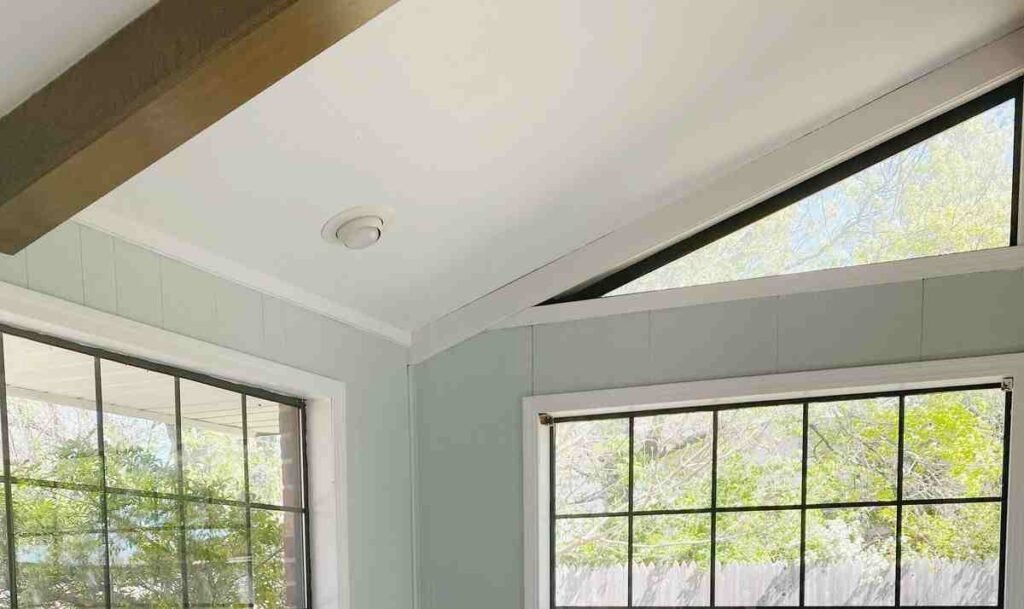Choosing the right window treatments for your home can transform a space, adding style, privacy, and even energy efficiency. From classic blinds and elegant drapes to modern shades and innovative smart options, the variety is vast. But it’s not just about picking what looks good—understanding the maintenance needs of each type is crucial to keeping them in top shape. Regular upkeep not only extends the life of your window treatments but also ensures they continue to function effectively and look their best. Let’s dive into the different types of window treatments, Radiant Clean Maintenance helps to explore how to keep them looking fabulous and functioning smoothly.
Blinds
Blinds are a versatile choice for window treatments, available in a variety of materials including wood, faux wood, aluminum, and vinyl. The slatted design of blinds allows you to adjust the angle of the slats to control the amount of light entering the room while maintaining privacy.
Regular upkeep of blinds is crucial to preserving their appearance and functionality. Dust blinds frequently using a microfiber cloth or a vacuum with a brush attachment to prevent dust buildup. For more thorough cleaning, wipe each slat with a damp cloth. Wood blinds require additional care; use a wood cleaner to maintain their finish and prevent damage. Avoid excessive moisture, as it can warp or damage wooden slats.
Shades
Shades are fabric-based window treatments that can be rolled or folded. They come in various styles, including roller shades, Roman shades, cellular shades, and pleated shades. Each type offers different benefits, such as energy efficiency or decorative appeal.
Shades require routine dusting to keep them looking their best. Use a vacuum with a brush attachment or a duster to remove dust and debris. For fabric shades, spot-clean any stains using a mild detergent or fabric cleaner appropriate for the material. Cellular shades, with their intricate design, can be gently vacuumed or spot-cleaned to address stains. Always check the manufacturer’s instructions for specific care guidelines to avoid damage.
Curtains and Drapes
Curtains and drapes are among the most popular window treatments due to their versatility and wide range of fabrics, from sheer to blackout. They can add a touch of elegance and help control light and privacy levels.
The maintenance of curtains and drapes depends on the type of fabric used. Regularly vacuuming with a brush attachment or shaking them out can help prevent dust buildup. For cleaning, follow the fabric care instructions—some curtains and drapes are machine-washable, while others may require dry cleaning or steam cleaning. Remove any hooks or rings before washing, and always check the care label to ensure proper cleaning methods are used to maintain the fabric’s integrity.
Shutters

Shutters are a durable and classic choice for window treatments, made from materials like wood or composite. They provide a more permanent solution for window covering and can add a significant design element to a room.
Shutters are relatively low-maintenance but do require regular care to keep them looking their best. Dust them regularly with a soft cloth or duster to prevent dust accumulation. For a more thorough clean, use a damp cloth to wipe down the slats. Be cautious with wood shutters; avoid harsh cleaners and excess moisture, which can damage the finish. A specialized wood cleaner can help maintain the sheen and finish of wooden shutters.
Valances and Cornices
Valances and cornices are primarily decorative top treatments for windows. Valances are usually made of fabric and hang from a rod, while cornices are often constructed from wood or upholstered materials and cover the top of the window frame.
Dust valances and cornices regularly to keep them free from dust and cobwebs. For fabric valances, spot-clean stains with a mild detergent or use a fabric cleaner suitable for the material. Depending on the construction, cornices can be cleaned with a damp cloth. Be cautious with any upholstery or wood finishes to avoid damaging the materials.
Vertical Blinds
Vertical blinds are ideal for large windows or sliding doors and consist of vertical slats that can be made from fabric, vinyl, or aluminum. They offer a modern look and efficient light control.
Vertical blinds need regular dusting to prevent dust from accumulating on the slats. Use a duster or a vacuum with a brush attachment to remove dust. Fabric slats may need spot cleaning with a mild detergent for stains, while vinyl and aluminum slats can be wiped down with a damp cloth. For more comprehensive window cleaning, some vertical blinds can be removed and cleaned more thoroughly, following the manufacturer’s instructions.
Motorized Window Treatments
Motorized window treatments offer the convenience of remote, app, or smart home system control. These treatments can include motorized blinds, shades, or curtains, providing an advanced solution for managing light and privacy with minimal effort.
While the primary focus for motorized treatments is on the window covering itself, it’s also important to maintain the motor and control components. Regularly clean the window treatment material based on its type—dust blinds or shades, and clean fabrics according to care instructions. Ensure that the motor and remote components are functioning properly; replace batteries as needed and check for any obstructions or malfunctions in the system. Routine servicing of the motor mechanism can help prevent issues and prolong the system’s life.
Sheers
Sheer curtains are made from lightweight, translucent fabric that allows light to filter through while offering a degree of privacy. They are often used in conjunction with other window treatments to add a soft, airy quality to a room.
Due to their delicate nature, sheer curtains require gentle cleaning. Regularly dust or vacuum them using a low suction setting to remove dust and debris. For more thorough cleaning, hand wash the sheers with mild detergent or use a fabric cleaner suited for delicate materials. Some sheer fabrics may be machine washable on a gentle cycle, but always check the care label to avoid damage.
Valances
Valances are decorative top treatments that cover the upper portion of a window. They are typically made from fabric and can be used alone or in combination with other window treatments to add a finishing touch.
Dust valances regularly to prevent the buildup of dust and dirt. For fabric valances, spot-clean any stains with a mild detergent. Depending on the fabric, they may be machine-washable or require dry cleaning. Always refer to the manufacturer’s care instructions to ensure proper cleaning and avoid potential damage.

Cornices
Cornices are similar to valances but are typically more rigid and often made from wood or upholstered materials. They provide a structured and decorative finish to the top of the window frame.
Clean cornices regularly with a damp cloth to remove dust and grime. For upholstered cornices, check the care instructions; spot clean as needed or use a fabric cleaner suitable for the material. Wood cornices should be treated with a furniture polish or cleaner designed for wood to maintain their finish and appearance.
Panels
Panel window treatments include both fixed and sliding panels that can be used to cover windows or doors. They can be made from a variety of materials, including fabric, vinyl, or wood, and offer a sleek, modern look.
Depending on the material, panel maintenance varies. Fabric panels should be dusted regularly and cleaned according to the manufacturer’s instructions. Vinyl panels can be wiped with a damp cloth, while wooden panels require periodic dusting and a wood cleaner to maintain their finish. Sliding panels need to be checked for smooth operation and cleaned along the tracks to ensure they function properly.
Sliding Panels
Sliding panels are a modern and versatile option for covering large windows or sliding doors. They operate on a track system and can be made from fabric, vinyl, or other materials.
Keep sliding panels functioning smoothly by regularly cleaning the tracks to remove dust and debris. Dust the panels frequently to prevent buildup. Fabric sliding panels should be cleaned according to their care instructions, while vinyl panels can be wiped down with a damp cloth. Regularly inspect the sliding mechanism and ensure it is free from obstructions and operating correctly.
Sheer Panels
Sheer panels are similar to sheer curtains but are often used as part of a layered window treatment system. They provide a soft, light-filtering effect while allowing for additional treatments like drapes or blinds.
Sheer panels require gentle care to maintain their delicate appearance. Regularly dust or vacuum them to prevent dust buildup. For deeper cleaning, hand wash with a mild detergent or use a fabric cleaner suitable for delicate materials. If machine-washing is permitted, use a gentle cycle and avoid high heat to prevent damage.
Conclusion
Proper maintenance of window treatments ensures they not only enhance the look of your home but also function effectively over time. By understanding and applying the appropriate care techniques for motorized treatments, sheers, valances, cornices, panels, sliding panels, and sheer panels, you can keep your window coverings in excellent condition. Regular cleaning and adherence to material-specific care guidelines are essential for maintaining their beauty and functionality.
